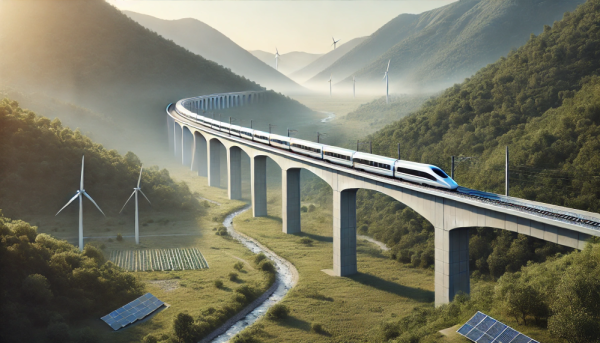The way we design, build, and maintain engineering systems is undergoing a fundamental shift – and holistic system analysis is leading the way.
They ensure that components like beams and columns can be joined to achieve the required lengths and configurations when continuous sections are impractical due to fabrication, transportation, or onsite assembly constraints.
Traditional methods, which rely on isolated analysis of individual components, often fall short in capturing the complexities of real-world performance. Instead, engineers are now turning to holistic system analysis—a methodology that considers how every element of a system interacts, depends on each other, and performs over its entire lifecycle, as well as external factors that may influence outcomes.
At the forefront of this shift is digital twin technology, a tool that allows engineers to create virtual models of real-world assets. These digital counterparts don’t just replicate structures—they enable predictive analysis, real-time monitoring, and continuous optimisation.
The result? Smarter designs that have optimal functionality, reliability, safety and sustainability, through a reduction in material waste and carbon footprint.
Why holistic system analysis matters
Take the example of railway bridges—an area where HERA, in collaboration with KiwiRail, is working to develop standardised, optimised designs. Traditionally, bridge design has focused on individual elements: structural integrity, material durability, or load-bearing capacity. But holistic system analysis looks at everything collectively in order to address research gaps in optimising their design using system simulation and flexible multibody analysis.
By simulating real-world conditions, engineers can make data-driven decisions to minimise material usage and embodied carbon, maximise the service life of components and evaluate the impact of design proposals for fabrication costs.
The role of digital twins in modern engineering
Digital twins take this concept a step further. By creating a real-time virtual representation of a physical system, engineers can:
- optimise design processes by testing different scenarios before anything is built;
- predict maintenance needs before failures occur, reducing downtime and costs;
- minimise material use without compromising safety, supporting sustainability goals; and
- enhance long-term performance by continuously updating models with real-world data.
This technology is rapidly gaining traction across industries and is a key focus in HERA research both in our Ngākopa Construction 4.0 and ACM CRM projects. In fact, aerospace, automotive, and civil engineering sectors are already leveraging digital twins to drive efficiency and improve decision-making—so it is no surprise that the construction and manufacturing sectors are next in line for transformation.
Keen to learn more? Then we have the webinar for you!
If you’d like to explore how holistic system analysis and digital twins are shaping the future of engineering, HERA is hosting an exclusive members-only webinar featuring Professor Carsten Schulz, who is a leading global expert in holistic optimisation.
Professor Schulz, from the University of Applied Sciences Regensburg in Germany, has an extensive background in multibody simulation, digital engineering, and system analysis . As part of his collaboration with HERA and KiwiRail, he will share insights into the application of digital twins across structural, transport, and machinery components.
Key topics covered in the webinar:
✅ The fundamentals of holistic system analysis
✅ The role of digital twins in modern product development and its capabilities
✅ Case studies on lifetime calculation, predictive maintenance, and design optimisation.
✅ How engineers can apply these techniques to reduce material consumption, maximise service life, and minimise embodied carbon.
This 45-minute presentation, followed by a 15-minute interactive discussion, is a must-attend for:
- mechanical and structural engineers
- FEA simulation experts
- vibration engineers, or
- anyone working in digital engineering and system optimisation.
Join us on 5 March at 12:00 pm for this free, members-only webinar and gain exclusive insights from a global expert. 🔗 Register now to secure your spot!
Nā (Author)
Michail Karpenko
Panuitia! Read on hera.org.nz

